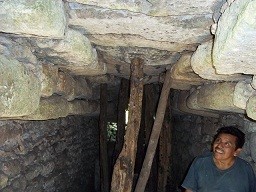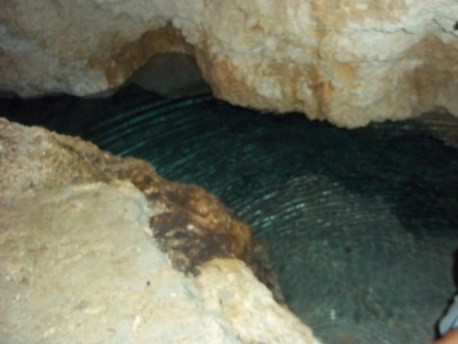In May 2012, I crossed paths with Don Pedro Cupul, commissary of the small Mayan community of El Naranjal. El Naranjal is located at the bottom of a dead-end road in the northern Yucatan peninsula, and you have to cross many speed bumps (topes) to reach it. I was investigating an ecotourism project called “Puerta Verde” (Green Portal) when a journalist in Kantunikil became aware of what I was up to. He connected me with Don Pedro.

Don Pedro Cupul
Don Pedro and his community invited me to a board meeting, and we agreed on collaborating in bringing visitors to their village of El Naranjal, precisely visitors who are looking for an authentic experience. They asked me to sit at their mechanical typewriter and we composed a contract together, clarifying fees, conduct, and services. Check out some pictures here.
Besides being surrounded by a lush tropical jungle with some impressive old and tall trees, they are blessed with a gorgeous cave cenote and an archaeological site hidden in the jungle. Don Pedro took office as the commissary in May 2012. Only a few months into office, he managed to have the archaeological site officially inaugurated by the National Institute of Anthropology and History (INAH), and he got approval for government support for developing El Naranjal as an ecotourism destination starting in 2013. He grew up in El Naranjal himself, and it has been his long-time dream to establish ecotourism in his village. When he speaks in front of the group you can almost see him glow with enthusiasm.

El Naranjal cave cenote
All community members are working on a volunteer basis to prepare the village for visitors. One woman operates the nursery which sells plants to government offices on a regular basis as a form of financial support for the village. But they also sell plants to regular clients. The men have been working hard to control the weeds from overgrowing the archaeological site. They improved the cave entrance and build a walking path and wooden staircase down to the underground water level. All work is being done by hand, since using dynamite would cause the cave roof to collapse and fill in the cenote. It would also contaminate the water. Since nobody gets paid, everyone is eager to receive visitors as soon as possible and generate income with soft tourism. The goal is to open the cenote and underground river to the public; and to lead educational jungle hikes including a visit to the nursery, as well as tours around the archaeological site. The ruins can be visited by tricycle to include wheelchair users. One of the villagers opens their home and serves homemade food to visitors, and everyone displays local arts & crafts for sale on the plaza: hand-woven hammocks, embroidered napkins, and dresses (huipiles), wood carvings, etc. See their progress here. and here.
Project Mayan Encounter offers guided day trips to El Naranjal in German, English, Spanish and French, and tours can be made accessible for wheelchair travelers.
Please email us if you’d like to visit!


Leave A Comment